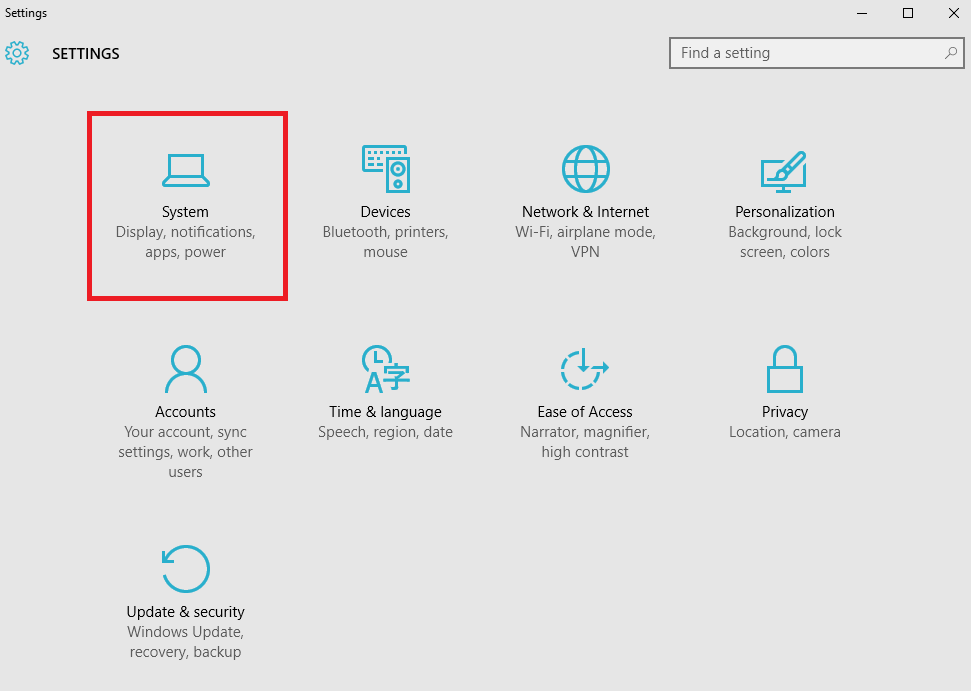

On the Change Account window, check the Incoming mail server and Outgoing mail server settings against those from your email provider. On the Account Settings window, select the account you're trying to troubleshoot and select Change. On the Mail Setup - Outlook window, click Email Accounts. For some users, depending on what they do, it can be annoying to accidentally switch between apps when just trying to use your computer on a daily basis. In Control Panel, search for and open the Mail icon.
Windows 8 how to change app settings windows 8#
This is sometimes used by computer professionals in order to allow Windows 8 to boot from an alternate device, such as a USB dive, and is not often needed by most users. App switching is one part of that overall experience. If you need to change the way that Windows 8 boots up by default, you can change the boot and startup settings by clicking the Restart now button under the Advanced startup section. Windows 8 was meant to introduce users to a more “mobile” experience on their PCs. Why is app switching important in Windows 8? However, if you don’t have one of those versions of Windows 8, you will have to manually edit each and every account on the computer to turn it off permanently.
Windows 8 how to change app settings Pc#
If you are using Windows 8 Pro, Ultimate or Enterprise versions, you can change the Group Policy for app switching so that every account on the PC cannot use it. You will no longer be able to switch between apps when you accidentally hover over that part of your computer screen. Now, if you head back to the Start screen and open multiple apps, you will only see your most recent app in the top left hand corner. It’s not necessary to change the second option to off, because the first will turn it off by default. Click OK and your changes are effective immediately.Under the header App switching, change Allow switching between recent apps to “Off.”.Check "List desktop apps first in the Apps view when it's sorted by category" to make sure your traditional Windows desktop apps get priority over the new Windows Store apps.Under the Start screen section, check the box for "Show the Apps view automatically when I go to Start.".Click on the Navigation tab of Taskbar and Navigation properties.While viewing the Desktop, right click on the Taskbar and select Properties.Step 3: After entering Font settings window, unselect Hide fonts based on language settings. Step 2: In the Fonts window, click Font settings on the top left. Open Run dialog by pressing Windows Logo Key and R key together, type fonts and click OK. To enable these new features follow these steps: Steps to change font settings in Windows 8/8.1: Step 1: Access the Fonts folder by a run command. In some cases, there are options to enable. To change these settings, you will need to switch the PC boot mode from one enabled as Legacy BIOS (also known as CSM Mode) to UEFI/BIOS (Unified Extensible Firmware Interface). Microsoft also included a additional setting that displays your desktop apps before your full-screen Windows Store Metro apps. From the next screen, select Troubleshoot > Advanced options > UEFI Firmware Settings > Restart to make changes. Users will now be able to enable a new app list view to display by default instead of the large tiles of Windows 8 when the Start Screen is displayed.Īpplications are displayed in folders, similar to the traditional Start Menu but with all folders expanded and full-screen. You’ll get a prompt that says that your app’s data will be deleted. In the Settings window, scroll down to the Reset section and click Reset. Right-click the app in the results and select App settings. Hidden away in Taskbar and Navigation properties are new settings that will allow users to customize the full-screen Start Screen. In the Task Manager window, switch to the Startup tab. To start resetting Settings, open your Start menu and search for Settings. The Start Menu as we knew it may never be coming back to Windows, Microsoft is returning some aspects of the traditional Start Menu in Windows 8.1.


 0 kommentar(er)
0 kommentar(er)
